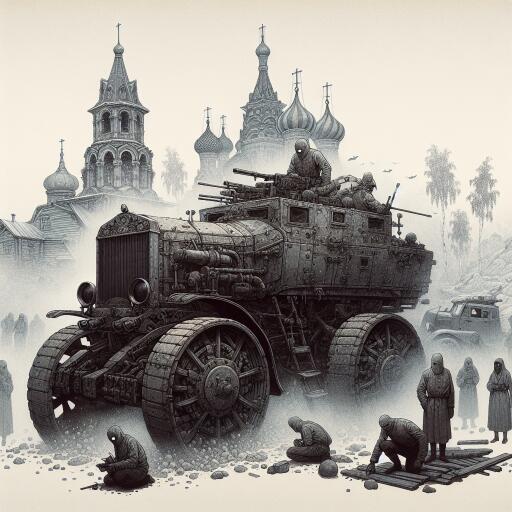Russia Continues to Bet on Demothballing Old Armored Vehicles – Defense Intel
Amid continued tensions and conflicts, Russia’s military strategy seems to center around the revival and upgrade of its older armored vehicle fleet. This approach has been highlighted by Andrii Yusov, a spokesman for the Main Intelligence Directorate of Ukraine’s Defense Ministry, during a transmission on the national telethon, according to an Ukrinform correspondent.
The focus on reviving and enhancing out-of-service models sheds light on the state of Russia’s defense industrial capabilities. “When it comes to the production of modern equipment, particularly armored vehicles, the strategy remains to rely on demothballing and upgrading older models,” Yusov elaborated. This tactic reflects both the challenges and the partial successes Russia faces in its defense manufacturing sector amidst the ongoing conflict.
In contrast to its struggles with producing new armored equipment, Russia has maintained a certain level of missile production. This effort, though problematic for Ukraine, is sustained through various means including evasion of sanctions, smuggling, and other illicit activities. These actions highlight the complex interplay between international sanctions, illicit trade, and military logistics that underpins the conflict.
Yusov also touched on the broader impacts of international sanctions on Russia’s economy and its defense production capabilities. “Sanctions are working,” he stated, referencing the comprehensive measures employed by the international community, including economic sanctions and more direct actions hinted to involve sabotage.
The discussion further delved into the strategies employed by Russia to protect its naval assets in the Black Sea. According to Yusov, Novorossiysk has become a primary sanctuary for what remains of Russia’s Black Sea naval fleet. Efforts to fortify this base and the regular redeployment of naval assets underscore the strategic importance of the maritime domain and the ongoing adjustments made by the Russian military in response to threats.
On the topic of identifying Russian servicemen responsible for Iskander ballistic strikes on the Kharkiv and Sumy regions, Yusov underscored the complexity and length of such intelligence operations. “This is serious work of intelligence operatives, analysts, etc. The enemy must understand that evil will not remain unpunished and anonymous,” he asserted, highlighting the importance of accountability and the meticulous efforts of intelligence agencies to trace these actions back to their perpetrators.
Lastly, Yusov provided insights into Ukrainian intelligence’s monitoring of Russian construction of fortifications around Mariupol. This development points to an ongoing effort by Russia to solidify its positions and fortify its control over contested areas, showcasing the dynamic and evolving nature of the conflict’s frontline.
As the situation unfolds, the reliance on demothballing and modernizing older armored fighting vehicles by Russia reveals a multifaceted strategy aimed at sustaining its military capabilities amidst international sanctions and ongoing resistance. The Ukrainian defense intelligence’s efforts to monitor, expose, and counter these measures highlight the continued resilience and strategic acumen of Ukraine in the face of aggression.










